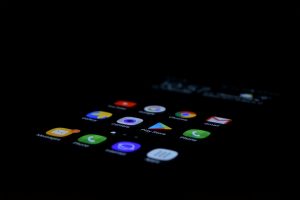iPhone 14 Pro vs iPhone 14 – Is the Pro Version Still Worth Buying in 2025?

Now that the iPhone 15 and 16 lineups are available, many people are asking whether it’s still wise to go for the older iPhone 14 or 14 Pro. Although these models are not the latest, they remain relevant in markets like Pakistan, where affordability and value-for-money often matter more than having the newest release.
Processing Power and Performance
The iPhone 14 uses the A15 Bionic chip — the same processor used in the iPhone 13. While it’s still efficient and runs most apps smoothly, it’s not the most powerful option anymore, especially if you’re thinking long-term.
On the other hand, the iPhone 14 Pro is powered by the A16 Bionic chip. This newer processor provides faster performance and better power efficiency, which can make a noticeable difference in multitasking and gaming.
Camera Upgrades
One of the biggest differences between the two models lies in the camera systems. The standard iPhone 14 has a dual 12 MP setup, which is decent and produces good photos, but it’s not a major upgrade from the iPhone 13.
The Pro version, however, features a triple camera system including a 48 MP main lens and a LiDAR scanner. This means significantly improved photo quality, especially in low light, and more professional-looking results overall. For content creators and photography lovers in Pakistan, this can be a big advantage.
Display and Design
Both phones come with 6.1-inch OLED displays, but the iPhone 14 Pro offers a smoother experience thanks to the 120 Hz ProMotion refresh rate. This makes animations and scrolling much more fluid compared to the 60 Hz screen on the iPhone 14, which feels outdated in 2025.
The Pro model also introduces the Dynamic Island, replacing the notch with a new interactive area that integrates notifications and background activities. It not only looks more modern but also adds to the phone’s usability.
Build Quality
In terms of design, both phones have flat sides and glass backs, but the materials differ. The iPhone 14 has an aluminium frame and glossy back, which is lighter and has more grip. The 14 Pro uses stainless steel with a matte glass back — it feels more premium but can be slippery and shows fingerprints more easily.
Battery and Charging
Battery performance is solid on both models. However, the A16 chip on the Pro helps manage power slightly better. Both phones still use the Lightning port, which might be phased out soon as Apple moves toward USB-C in newer devices.
Durability and Extras
Both the iPhone 14 and 14 Pro come with an IP68 rating, meaning they’re water and dust resistant. The camera module on the Pro is larger and more prominent, which makes the device stand out but also adds some bulk.






